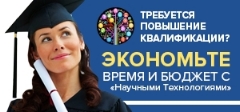Fokin Roman Romanovich (Professor of Department 111 (Mathematics), Doctor of Pedagogical Sciences, Associate Professor
Federal State Public Military Institution of Higher Education «Military space Academy named after Mozhaisky», Saint-Petersburg, Russia
)
Abissova Marina Alekseevna (Associate Professor of the Department of Computing Systems and Informatics, Candidate of Pedagogical Sciences, Associate Professor
Admiral Makarov State University of Maritime and Inland Shipping, Saint-Petersburg, Russia
)
Ershova Elena Viktorovna (Teacher of Department 111 (Mathematics)
Federal State Public Military Institution of Higher Education «Military space Academy named after Mozhaisky», Saint-Petersburg, Russia
)
| |
The article substantiates the expediency of teaching the theory of open systems (TOS) in universities when teaching computer science and, in the future, also technical and pedagogical sciences. That TOS was developed by IBM in the 1960s. Since then, this theory has been the core of modern computer science. Open systems (OS) are understood by IBM as systems for which there are open (accessible to all) descriptions (specifications) of their internal and external interfaces. An interface refers to a certain communication module. Internal connections are the connections between the components of the system. External links of this system with others. Are discussed: the theoretical foundations of TOS and approaches to its teaching; features of programming in TOS and OS Linux; the history of the emergence and development of TOS; some limits of TOS application; examples of the spread of TOS to technical and pedagogical sciences.
Keywords:students, learning, induction, deduction, historicism, computer science, open systems, specifications, stratification, metamodeling, technology, pedagogy.
|
|
| |
|
Read the full article …
|
Citation link:
Fokin R. R., Abissova M. A., Ershova E. V. SOME SUBSTANTIVE PROBLEMS OF TEACHING OPEN SYSTEMS THEORY IN UNIVERSITIES // Современная наука: актуальные проблемы теории и практики. Серия: ГУМАНИТАРНЫЕ НАУКИ. -2024. -№11. -С. 179-184 DOI 10.37882/2223-2982.2024.11.42 |
|
|






